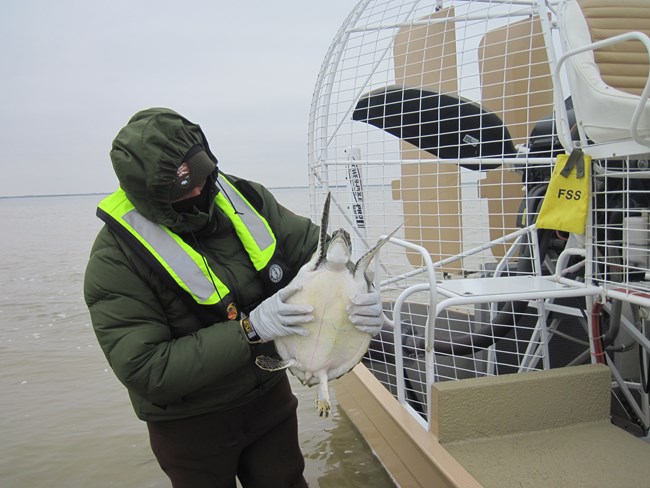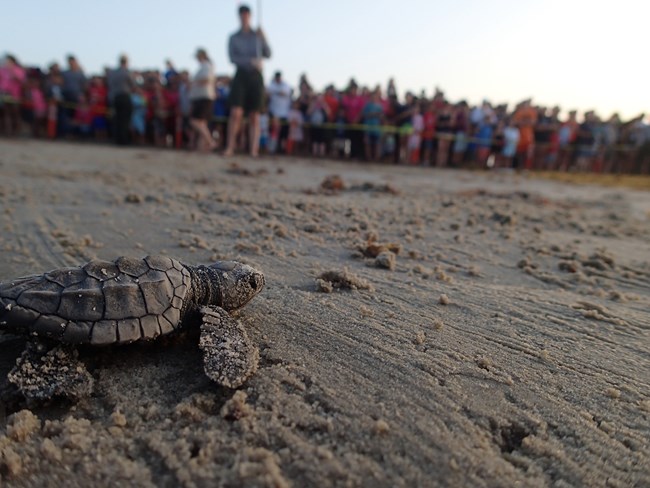|
The Sea Turtle Science and Recovery program at Padre Island National Seashore focuses on the five sea turtle species - Kemp's ridley, green, loggerhead, hawksbill, and leatherback. All are federally listed as threatened or endangered. 
NPS Photo. Scientific ResearchA primary goal of the program is to conduct scientific research. Sea turtles spend 99% of their lives in the water and can travel thousands of miles. Their migratory habits make it difficult to conduct research on population dynamics, foraging habits, and critical habitat. Scientific research can help reveal this information and lead to actions that help save sea turtles. 
NPS Photo. ConservationAnother goal of the program is to conduct activities that directly help protect, conserve, and recover sea turtle populations. Each summer, staff and volunteers patrol beaches in search of nesting sea turtles and nests. Females found nesting are protected while on the beach, and nests found are moved to protected areas that are safe from predators, vehicular traffic, and other hazards. Nests are protected and monitored until they hatch; then the hatchlings are released. When conditions allow, the public is invited to attend hatchling releases. Park staff members work with partners to help support nesting patrols along the Gulf Coast, provide technical assistance and training, and coordinate these efforts along the beaches of Texas and Mexico. The park collaborates with partners to collect, maintain, and analyze nesting records for all sea turtle nests found in Texas. 
NPS Photo. Public AwarenessA major goal of the Sea Turtle Science and Recovery program is to promote public awareness of and support for sea turtles and their conservation. Sea turtles can travel to and be affected by human activities in many different countries around the world. This website and Facebook page are important tools that can effectively reach many thousands of people around the globe to raise awareness about sea turtles and their plight. We cannot save sea turtles without the help and support of local communities, global citizens, and visitors like you. |
Last updated: February 18, 2025
